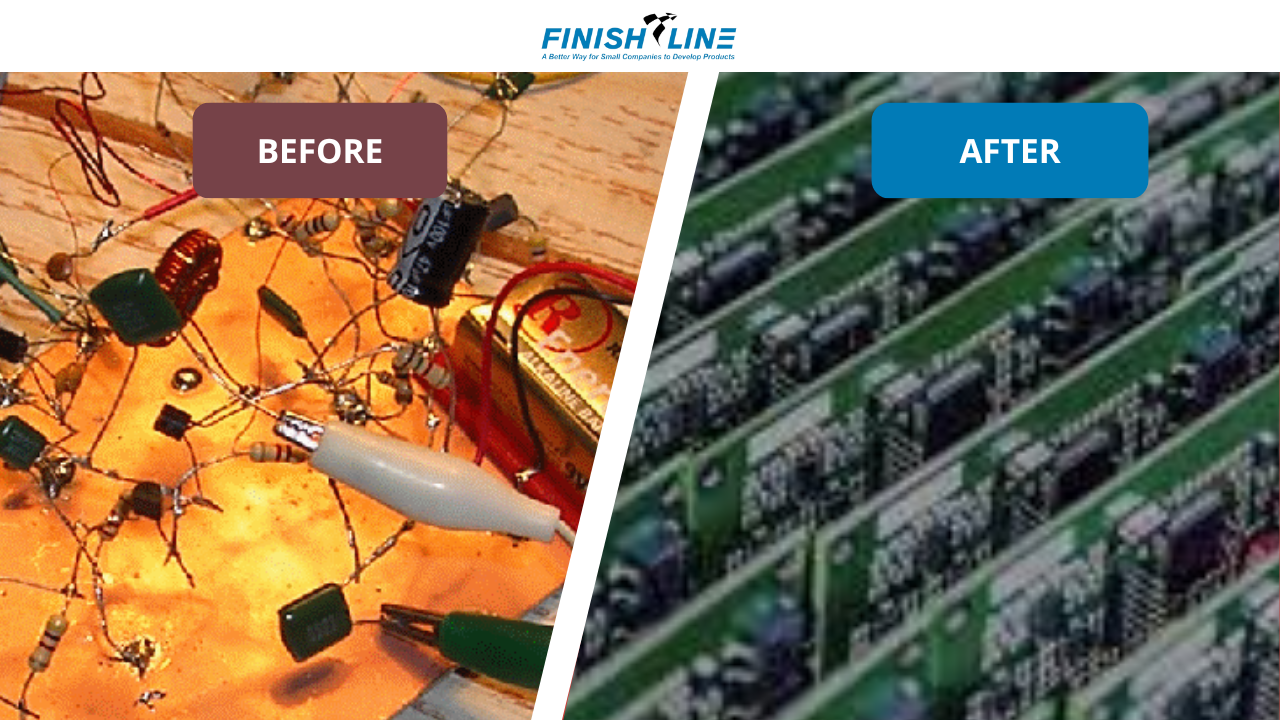You’ve got a working prototype – awesome! That’s like having a promising engine design. But turning that engine into a winning race car ready for the track is a complex process. This blog post will guide you through the key stages of this build, focusing on documentation for manufacturing and manufacturing management.
1. Design Verification Test (DVT): Fine-Tuning the Engine
Just because your prototype runs in the shop doesn’t mean it’s ready for the Daytona 500. A Design Verification Test (DVT) is like putting your engine on a dyno. It ensures your product meets all the requirements outlined in your documentation (check out our Requirements Document Template). Each function, every specification, needs to be rigorously tested. For example, if your product is designed to withstand extreme temperatures, the DVT will verify that it can handle the heat (and the cold!).
Pro Tip: Bring in a fresh set of eyes for the DVT. An independent team can spot potential weaknesses that your own team might overlook due to familiarity with the design. Download our DVT template to get started.
2. Documentation for Manufacturing: The Blueprint for the Chassis
Imagine trying to build a race car without blueprints – chaos, right? The same applies to manufacturing. Clear, comprehensive documentation is essential. Your Contract Manufacturer (CM) relies on these documents to build your product correctly. “Drawing compliance” is crucial: if it’s important for the car, it needs to be on the blueprint!
A complete control drawing set is vital, covering every aspect of your product’s design and functionality. This includes everything from component specifications to assembly instructions. And don’t forget a robust drawing control system to ensure everyone is working from the latest versions. Think of it as version control for your chassis blueprints, preventing costly mistakes.
Unsure about your documentation? We’re happy to help! Contact us for a documentation review.
3. Field Testing: Taking it to the Track drawings.
No product survives its first encounter with real users unscathed. Field testing is your opportunity to gather invaluable feedback before scaling up. It’s like taking your car to the track for some test laps. You’ll discover unexpected issues, identify areas for improvement, and gain a better understanding of how your product performs in real-world scenarios.
Remember, learning is a continuous process. You’ll learn different things at different production volumes (100 units, 1,000 units, 10,000 units, etc.). A gradual production ramp is key, allowing you to address issues as they arise and avoid costly mistakes down the line. Delay major investments (molds, test fixtures, specialized chips) until you’ve gathered enough data and refined your design.
4. Choosing the Right CM: Assembling Your Pit Crew
Selecting the right Contract Manufacturer (CM) is one of the most critical decisions you’ll make. It’s like choosing the right pit crew for your race – you need skilled, experienced individuals who can work together seamlessly. There are many great CMs out there, but finding the right one for your product and team is crucial.
Do your due diligence. Understand their expertise, their capacity, and their culture. This is a long-term partnership, so choose wisely. Most CMs operate on an “open book” basis, sharing cost breakdowns for parts, labor, and profit margins.
Remember, cost isn’t everything. A CM with a slightly higher labor rate might offer better quality, more efficient processes, and the ability to handle complex assemblies. Don’t choose based on price alone. Consider factors like communication, responsiveness, and understanding of your specific needs.
We recommend having two CMs and splitting the work between them. This provides a safety net and helps you avoid single-source dependencies. Also, ensure your revenue aligns with the CM’s size and focus. You don’t want to be their smallest client or their biggest, as both scenarios can present challenges.
5. Red Flags: Paying Attention to the Dashboard
Any hiccup, no matter how small, should be investigated thoroughly. Don’t ignore the warning lights on the dashboard. Find the root cause and implement corrective actions. Was it a user error? A manufacturing defect? A design flaw? Understanding the “why” is essential for preventing future problems.
Building a Winner: From Prototype to Product
A working prototype is a fantastic starting point. But transforming that prototype into a market-ready product requires careful planning, meticulous execution, and a strong partnership with the right CM. It’s a journey that demands attention to detail, a willingness to learn, and a proactive approach to problem-solving. If you find yourself overwhelmed by this process, consider our Prototype to Production – Finish Line Product Development programs and contact us – we can help you cross the finish line.



Hello are you able to make a design, diagram radiation RF on Log Periodic antennas with our specifications ?
Education purposes